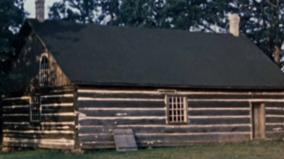Allan Wargon (7)

Allan Wargon
“Don’t you see the problem? You’re trying to make it move. You’re in the wrong medium.”
That assessment of Allan Wargon’s four unfinished paintings—by George Dunning, who would later make Yellow Submarine—led Wargon, a fledgling fine artist, to trade in his canvasses for celluloid. He would go on to make more than 150 films as a scriptwriter, director and producer.
Before the meteoric rise that would see him write, direct and edit The Longhouse People (1951) at age 26, Wargon packed a significant and eclectic range of artistic experiences into his formative and developmental years. After deciding at age 12 to become an artist, he graduated from Toronto’s Central Technical High School and the Ontario College of Art. At age 21 he served as Chief Designer of Decorative Displays at Eaton’s College Street before talking his way into an entry-level production job at the NFB. Along the way he rubbed shoulders with acclaimed artists like the Group of Seven’s Frederick Varley. Varley’s appreciation for Wargon’s creative talents paved the way for the documentary Varley (1953), featured at the Venice Film Festival.
Wargon’s penchant for demanding more than was budgeted for financial and human resources often put him at odds with superiors, yet invariably garnered their respect once a film was released. His insistence on authenticity and honouring commitments made to subjects earned him their undying loyalty. Gratified by the fidelity with which Wargon had depicted his Cayuga clan’s life cycle in The Longhouse People, its primary participant, Chief Deskaheh, formally adopted Wargon as a nephew.
During his tenure at the NFB and beyond, Wargon frequented and worked with the who’s who of the entertainment, business and political spheres. His interactions with these players are documented in his 50-chapter, sardonically titled book The Birth of Hollywood North: Nice Idea, but Nothing Good Ever Came Out of Canada (2016).
Wargon’s body of work gives the lie to this slight. In addition to the aforementioned critically acclaimed films, at the NFB he made Lismer (1951), Salt Cod (1954), Sable Island (1956), Encounter at Trinity (1957), Wolfe and Montcalm (1957) and Canadian Profile (1957). Of the latter, noted Canadian filmmaker Allan King remarked that it was the “most mined film for stock footage at the NFB.” Wargon also produced and directed the pioneering Mr. Piper (1963), a 39-episode children’s series that was awarded a certificate of merit at the 1964 Cannes Film Festival.
After transitioning from the film business in Toronto to rural life near Shelburne, Ontario, Wargon painstakingly practised the art of creative writing before penning four novels and Hollywood North.
Nor were those Wargon’s last words. After grudgingly relinquishing the farm on which he drove a tractor until age 97, he and his wife, Esther, repaired to Toronto, where he continued to write until he passed away in July 2024.






